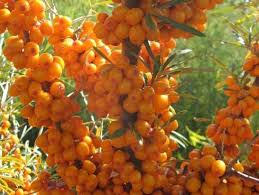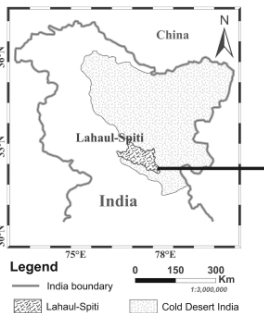Biodiversity & Environment
Seabuckthorn Plantation in the Cold Desert
- 15 Mar 2021
- 4 min read
Why in News
The Himachal Pradesh government has decided to start planting seabuckthorn in the cold desert areas of the state.
Key Points
- About Seabuckthorn:
- It’s a shrub which produces an orange-yellow coloured edible berry.
- In India, it is found above the tree line in the Himalayan region, generally in dry areas such as the cold deserts of Ladakh and Spiti.
- In Himachal Pradesh, it is locally called chharma and grows in the wild in Lahaul and Spiti and parts of Kinnaur.
- A major part is covered by this plant in Himachal Pradesh, Ladakh, Uttarakhand, Sikkim and Arunachal Pradesh.
- The Seabuckthorn Plantation has many Ecological, Medicinal and Economical benefits.
- Ecological Benefits:
- Seabuckthorn is a soil-binding plant which prevents soil-erosion, checks siltation in rivers and helps preserve floral biodiversity.
- In the Lahaul valley, where willow trees are dying in large numbers due to pest attack, this hardy shrub is a good alternative for protecting the local ecology.
- Grows well in dry regions and becomes much more important especially in the light of reduced water flow from Himalayan glaciers.
- Medicinal Benefits:
- As a folk medicine, seabuckthorn has been widely used for treating stomach, heart and skin problems.
- Its fruit and leaves are rich in vitamins, carotenoids and omega fatty acids and it can help troops in acclimatising to high-altitude.
- In the last few decades, scientific research worldwide has backed many of its traditional uses.
- Economical Benefits:
- Seabuckthorn also has commercial value, as it is used in making juices, jams, nutritional capsules etc.
- It is an important source of fuelwood and fodder.
- However, wild Seabuckthorn cannot sustainably supply raw material to the industry, and the plant needs to be cultivated on a large scale as is being done in China.
- Ecological Benefits:
Cold Desert in India
- The Cold Desert of India is situated in the Himalayas and stretches from Ladakh in the north to Kinnaur (in the state of Himachal Pradesh) in the south.
- The region has harsh climatic conditions such as very low rainfall and very high elevation (ranging from 3000 – 5000m Above Sea Level)] that adds to the coldness in its environment.
- Blizzards, snowstorms and avalanches are common.
- The soil is not very fertile and the climatic conditions allow very short growing seasons making it a bare landscape.
- Water resources are minimal and comprise glacier-fed streams.
Tree Line
- The tree line is the edge of the habitat at which trees are capable of growing. It is found at high elevations and high latitudes.
- Beyond the tree line, trees cannot tolerate the environmental conditions (usually cold temperatures, extreme snowpack, or associated lack of available moisture).





